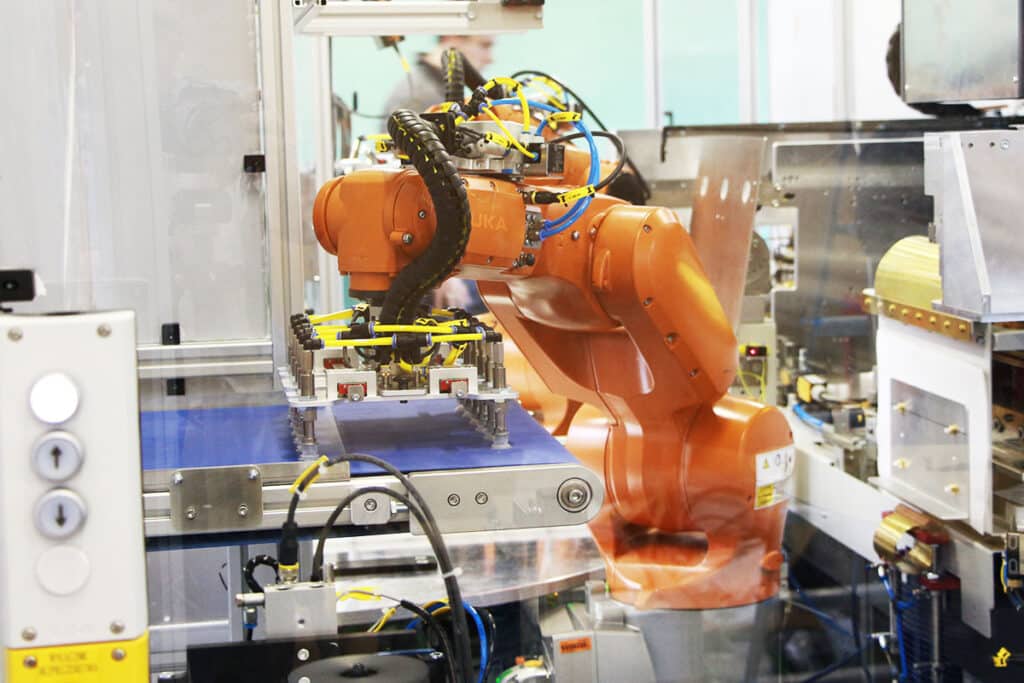Multi-axis applications in robots range from small technological solutions with high customization to large machines that are capable of palletizing. The sector is consistently growing, driven by technical innovations such as vision systems and an expanded range of robot movements.
From a manufacturing plant perspective, robotization offers significant opportunities to enhance productivity parameters and overall production quality. However, it also introduces specific work requirements. The potential of multi-axis robotics, on the one hand, improves overall production conditions and enables cost reduction in terms of human resource management. When a multi-axis robot replaces a human in the manufacturing process of a specific component, it becomes a crucial economic factor.
How many axes does a robot need?
This question has been a subject of debate for decades. It is natural to consider the operation of equipment in three planes, which can be visualized as follows:
X: representing the length.
Y: representing the depth
Z: representing the height.
Of course, it is equally natural to strive to increase the number of axes. However, this complicates the system and, in terms of robotics, increases both the capabilities and the price of the machine. At present, it can be assumed that the majority of robots operate with three to seven axes.
But what hides in the term ‘axis’ ? It is nothing more than the ability to operate within a specific plane, enabling the device to move through the manipulator. So, if a robot operates based on the aforementioned three XYZ planes, it is considered a three-axis robot. The greater the freedom it has, the wider its ability to reach specific points around it.
Three-axis robots, also known as Cartesian or SCARA robots, are currently the standard used for simple operations, primarily based on pick-and-place tasks. How do multi-axis robots, considered the future of automation, operate in relation to them?
Multi-axis robots and their application possibilities.
Recognizing the number of axes of a robot can be done by examining the number of motors it possesses. While these motors are typically connected to the main frame and manufacturers often prioritize aesthetics – and hide them so that they are invisible at first glance- it is still possible to infer the axiality of a robot by the number of masking elements used. Multi-axis robotic applications commonly utilize six planes, which can be expanded up to 10. The key characteristics of such solutions include:
- Working at any point within their operational reach.
- Flexibility for changes- Extension with additional axes, which are installed at the end of the robot arm.
- Utilization of various specialized end-of-arm tools or tips.
Additionally, it is important to note that industry automation increasingly utilizes the possibility of integrating robots onto conveyor belts.
Robot axes – their construction and potential.
The multi-axis nature of robots results in significant improvement in their operational capabilities. In practice, this translates to several advantages:
4-axis robots
Similar to their 3-axis counterparts, offer an additional degree of freedom by incorporating the ability to rotate the manipulator. This additional axis allows for greater precision in production processes that require not only XYZ operations but also precise positioning of the workpiece.
5-axis robots
More advanced devices that are appreciated in various industries. In addition to the standard XYZ-axis operation, the manipulator can also rotate in the YZ-axis system. As a result, the device allows for a much wider range of applications than 4-axis variants
6-axis robots
They offer a high degree of freedom and a wide range of motion due to the combination of three primary axes. This results in extensive workspace access. The only limiting factor is the length of the robot’s components. Therefore, 6-axis robots are considered an ideal solution in industrial contexts.
7-axis robots
While it seems that six axes are fully sufficient for most tasks, a seventh axis is important for more advanced activities. This additional axis allows for improved precision when placing a component in the air.
Robots with over 10 axes
Multi-axis robots with more than 10 elements are relatively rare compared to standard variants based on six planes. Instead, these robots are typically specialized platforms that have undergone extensive design development to meet the requirements of specific tasks.
Benefits of multi-axis robotic automation
Reaching for multiple work options brings forth tangible benefits, including:
- Greater efficiency in tackling challenging and advanced projects.
- Improved efficiency in production processes.
- Increase in precision while maintaining full repeatability.
- Maximization of robot utilization, such as operating in a 24-hour mode.
- Enhanced intuitiveness and ease of operation.
- Universal usability across various industries.
As a result, multi-axis robots have become fundamental technological solutions employed in the manufacturing and inspection sectors.


